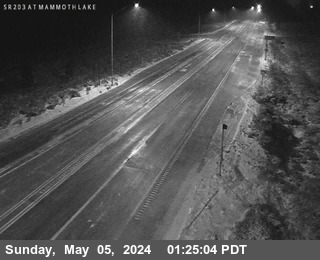Brought to you by Howard Sheckter
Upper High over the Great Basin at 700MB Becoming Negitive Tilt….to provide a Rush of Monsoon Moisture and Dynamics Beginning Saturday…..Wet Thunderstorms Expected Later This Weekend
Friday August 10, 2012
Stage is set for a nice out break of convection this weekend….Upper high has really cooked our air mass and now the Upper high at 700mb is forecasted to become negative tilt allowing SSE flow up the Southern and Central Sierra this Weekend. Campers take note to expect the possibility of heavy rain and lightning in some of these storms. Temps will be in the mid to upper 80s then cool into the upper 70s as thunderstorm coverage increases. Nighttime lows in the 50s will cool into the 40s by Sunday night…
Next week begins with scattered thunderstorms. Then moisture lurking to our south later next week from Tropical storms west of Cabo.
Comment:
Retired NWS forecaster Reno, Tom Cylke put into perspective what happens in a “Monsoon Pattern”. The emphasis to the public has always been that its the moisture that brings the thunderstorms during SSE flow. Nothing could be further from the truth…..It is Air Mass Modification”. In simple terms, an increase of dynamics, (vertical motion induced by a change in the upper flow from SSE in which the stability of the over lying atmosphere become increasingly unstable. Although you can see moisture at times when the air is cooled to its dew point,. However, you can not see actual dynamics…..only the results thereof.
Here is Tom’s most simplified version of what happens when we get into a classic Monsoon Pattern as the trajectory of both impulses, moisture and quasi stationary couplets in a regional develop to produce one of the exciting phenomenons in the mid Summer here in the Eastern Sierra.
From Tom C:
In the monsoon pattern the surface thermal trough and its associated low level convergence is coupled with divergence aloft around the periphery of the 4 corners high (after all, high pressure aloft is a large area of upper divergence which becomes enhanced by embedded easterly waves and MCS induced vort maxes rotating around the periphery of the high. Southeasterly flow enhances the Surface thermal trough (convergence) with warm advection while building up CAPE , theta-e AND PW values IE (Airmass Modification). Also to the northwest of the 4 corners high, an upper level jet max will develop in the thermal gradient over the Pacific northwest which will create upper divergence in the right rear entrance region which oftens couples with the low level convergence of the Surface thermal trough over the Sierra and Western Nevada. Tstms only require UVV(conv/div couplet) on an unstable airmass to trigger. The unstable airmass is primarily a result of the vertical redistribution of temperature (lapse) and moisture by UVV or convection.
Definitions from AMS as it pertains to the system we are referring to:
1. Convergence: An atmospheric condition that exists when the winds cause a horizontal net inflow of air into a specified region. Convergence can be have both directional and speed components. Because the earth is a solid barrier low level convergence of the wind field results in a piling up of air and upward vertical motion. Surface low pressure is an area of low level convergence.
2. Divergence: an atmospheric condition that exists when the winds cause a horizontal net outflow or air at a specific level. Divergence in the upper levels of the atmosphere (typically at jet stream level) above 25,000 feet causes a lowering of air density and which induces upward motion in the atmosphere to fill this vacuum.
3. Easterly waves. A wavelike disturbance in the tropical easterly winds that moves from east to west. Such waves can grow into tropical depressions or MCSs. Often seen as a vort max or inverted trough of low pressure or low level jet feature propagating westward along the southern periphery of the subtropical upper high then at times rotates north into California and Nevada from AZ.
4. (MCS) Mesoscale Convective systems. A complex of thunderstorms which becomes organized on a scale larger than the individual thunderstorms, and normally persists for several hours or more. MCSs may be round or linear in shape, and include systems such as tropical cyclones, squall lines, and MCCs (among others). These systems representing areas of enhanced instability and usually very heavy rain.
5. Vort Maxes. An area of the local rotation in a fluid flow. In weather analysis and forecasting, it usually refers to the vertical component of rotation (i.e., rotation about a vertical axis) and is used most often in reference to synoptic scale or mesoscale weather systems. By convention, positive values indicate cyclonic rotation. Areas of positive vorticity advection in the upper atmosphere are associated with upper level divergence and its dynamically induced UVM.
6. UVM upward vertical motion; UVV upward vertical velocity (rising air)
7. PW Precipitable Water; (Or precipitable water vapor.) The total atmospheric water vapor contained in a vertical column of unit cross-sectional area extending between any two specified levels( surface to 250 mb), commonly expressed in terms of the height to which that water substance would stand if completely condensed and collected in a vessel of the same unit cross section. A persistant pattern of vertical motion , deep convection and thunderstorm outflows in a light wind flow will result in a build up higher values of PW with time as often seen over the desert southwest during the mid summer “monsoon pattern”. A high PW airmass has the potential to produce heavy rain if sufficient UVM is avaible to trigger deep convection.
8. Thermal trough; Area of low pressure at the surface resulting from the strong surface heating of the continental land mass in the summer season. Sometimes refered to as the monsoon trough which drive the monsoon winds and associated low level convergence pattern. The thermal trough typically found elongated along the southern and eastern periphery of the upper level high in the desert SW where strong subsidence warming and warm advection reinforces the surface heating.
9. Lapse rates: The change in temperature with altitude in the atmosphere. usually the rate of cooling per thousand feet. The greater the cooling per thousand feet the more unstable the atmosphere is. UVM will result in a more unstable lapse while subsidence with building high pressure aloft will bring more stable lapse rates or capping of convection until this subsidence cap(stable layer) is broken by either stronger surface heating or cooling aloft( from an approaching trough or UVM)s
10. Couplet; usually refering to the vertical coupling of low level convergence at levels at or below 700 mb (10,000 ft) with upper level divergence at the jet stream level 300 mb or 250 mb( at or above 30,000 ft). This coupling is critical to maintaining UVM for the initiation and maintanence of deep convection (thunderstorms, MCSs). The low level convergence feeds the thunderstorm inflow while the upper level divergence results in the ventilation or chimney effect of the thunderstorm. The classic anvil top of a thunderstorm is a visible indicator of the spreading out of the high level ice crystal clouds by the upper level divergence. Strong upper level divergence in dynamic systems (upper lows, jet maxes) can often induce low level convergence and associated UVM which can result in long lived daytime and nocturnal thunderstorms.
11. CAPE; Convective Available Potential Energy. A measure of the amount of energy available for convection. CAPE is directly related to the maximum potential vertical speed within an updraft; thus, higher values indicate greater potential for severe weather. Observed values in thunderstorm environments often may exceed 1,000 joules per kilogram (j/kg), and in extreme cases may exceed 5,000 j/kg. However, as with other indices or indicators, there are no threshold values above which severe weather becomes imminent. Higher CAPE values are directly correlated with higher low level theta-e values and more unstable lapse rates.
12. Theta-E The temperature a parcel of air would have if a) it was lifted until it became saturated, b) all water vapor was condensed out, and c) it was returned adiabatically (i.e., without transfer of heat or mass) to a pressure of 1000 millibars. Is the 1000 mb temperature in Kelvin that results after all latent heat is released in a parcel of air. High values of theta-e at low levels indicate areas of high thermal energy from both sensible and latent heat which can be used to increase instabilty (lapse rates) and associated thermal lift components of convective systems.
The Dweeber………………………………..:-)
————————————————-
Reference Glossary of Weather Terms
Disclaimer: I have been a hobbyist meteorologist for over 30 years here in the Mammoth area and I do this for my personal enjoyment. The National Weather Service saves lives every day . . . I do not. When making important planning decisions please use information provided by the National Weather Service as they are the most knowledgeable and accurate information source available today.




